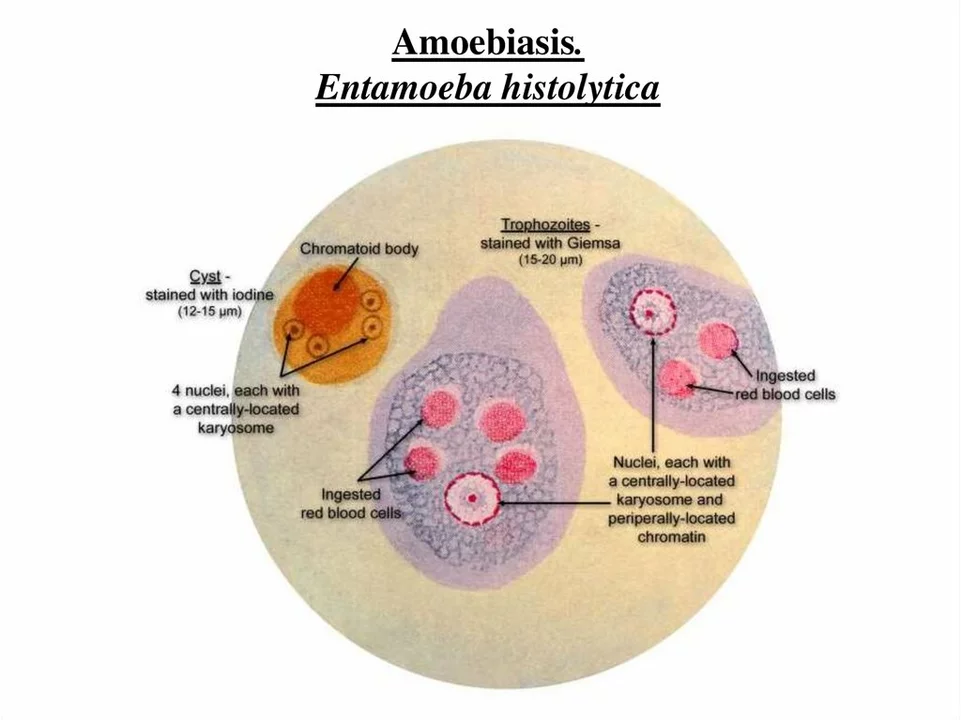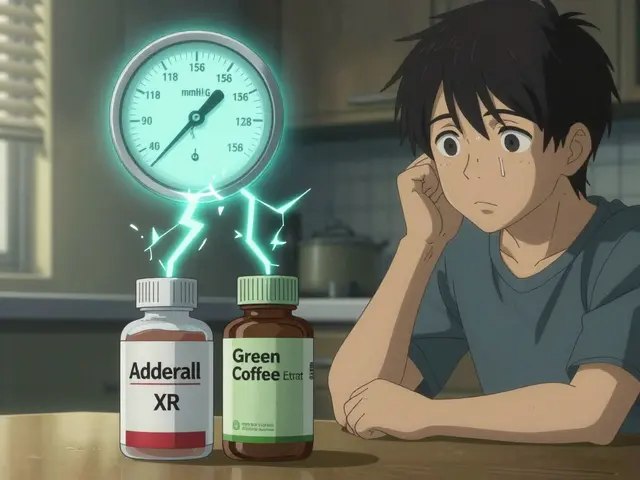Entamoeba histolytica: symptoms, diagnosis & treatment
Entamoeba histolytica is a single‑celled parasite that causes amebiasis — from mild stomach upset to serious bloody diarrhea and liver abscess. It spreads when people drink or eat food contaminated with cysts, or through direct fecal-oral contact. Many cases are mild or without symptoms, but the parasite can wreck your gut or spread to the liver if left untreated.
How infection looks and who gets it
Typical signs include stomach cramps, watery or bloody diarrhea, fever, and weight loss. Symptoms can start days to weeks after exposure. Travelers to areas with poor sanitation, people who drink untreated water, and those in crowded conditions face higher risk. Immunosuppressed people and those with poor hygiene are more likely to develop severe disease. If you suddenly get bloody diarrhea after travel, think entamoeba histolytica and see a clinician.
Diagnosis, treatment and prevention
Doctors don’t rely on symptoms alone. Lab tests matter: stool antigen tests or PCR are the best for spotting E. histolytica, while traditional microscopy can miss or confuse it with harmless relatives. Blood tests and liver imaging (ultrasound or CT) help if a liver abscess is suspected.
Treatment usually combines an amoebic tissue drug like metronidazole or tinidazole to kill invasive parasites, followed by a luminal agent such as paromomycin or diloxanide to clear cysts from the gut. Don’t skip the luminal follow-up — it’s how you prevent relapse and transmission. If imaging shows a liver abscess, most are treated with drugs alone, but some need drainage.
Simple prevention works: drink bottled or boiled water, avoid raw salads and street food in risky areas, wash hands often, and practice safe sex where relevant. In communities, improving sanitation and clean water supply cuts transmission dramatically.
Thinking of self-treating? Avoid it. Some common antibiotics don’t work against E. histolytica, and using the wrong drug delays proper care and risks complications. If you need medication and are using online pharmacies, pick ones that require a prescription and have clear contact info. Our site has guides about buying meds safely and comparing antibiotic options.
When to see help now: high fever, persistent bloody diarrhea, severe abdominal pain, signs of dehydration, or fever with right‑upper‑quadrant pain (possible liver abscess). These need prompt medical attention. For mild cases, follow-up testing after treatment confirms clearance and protects household contacts.
Want quick resources? Look for stool antigen or PCR testing at clinics, ask your provider about the two‑step treatment (tissue drug plus luminal agent), and check travel clinic advice before you go to high‑risk areas. With the right tests and medicines, entamoeba histolytica is treatable — but timing matters.
If you travel, get vaccines where recommended and carry a water filter or purification tablets. For families, test close contacts if someone is diagnosed. Employers and schools should improve bathroom hygiene and safe water. If you’re unsure which test or drug is right, ask for stool PCR and a clear treatment plan. Keep medication instructions and finish the full course. Call your doctor if symptoms worsen quickly.

Amebiasis and the Healthcare System: The Cost of Infection
As a blogger, I've recently delved into the topic of amebiasis and its impact on the healthcare system. Amebiasis is a parasitic infection that primarily affects the intestines, leading to diarrhea, abdominal pain, and other complications. It's a concerning public health issue because it puts a significant financial strain on our healthcare system. The cost of infection not only includes medical expenses for diagnosis and treatment but also the loss of productivity due to illness. It's crucial for us to raise awareness about this issue and work towards improving sanitation and access to clean water in order to prevent the spread of amebiasis.
Detail




